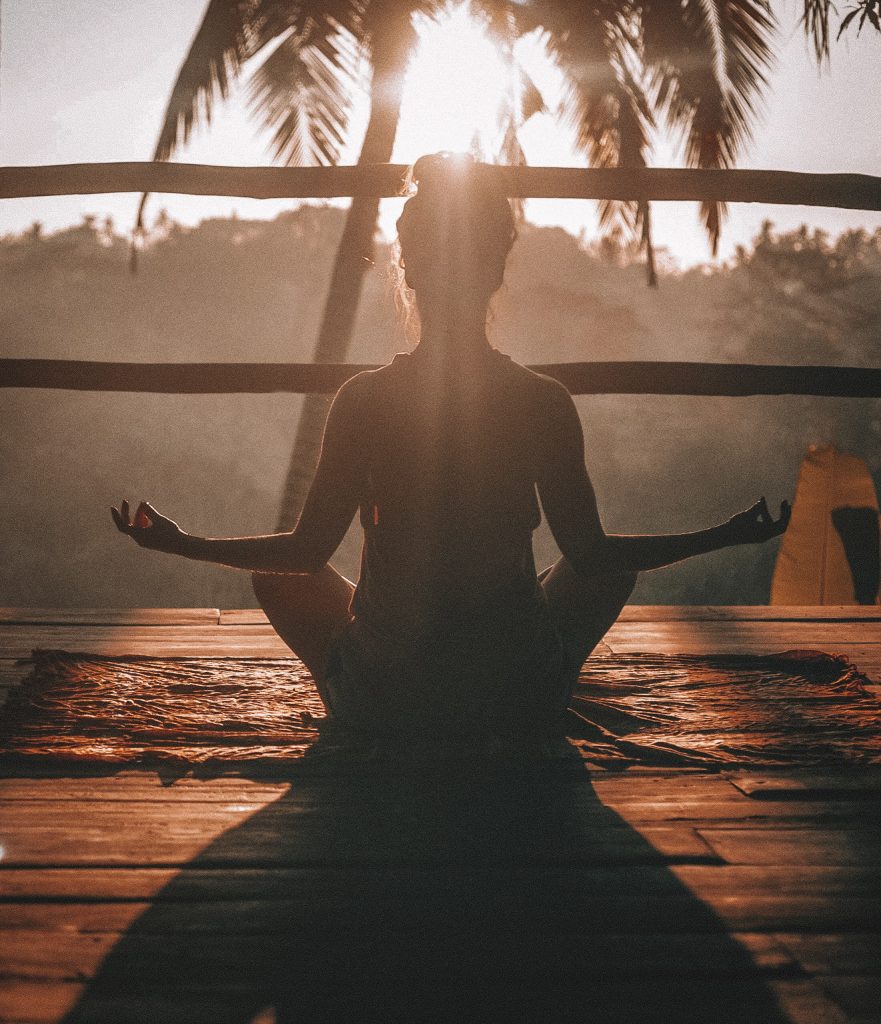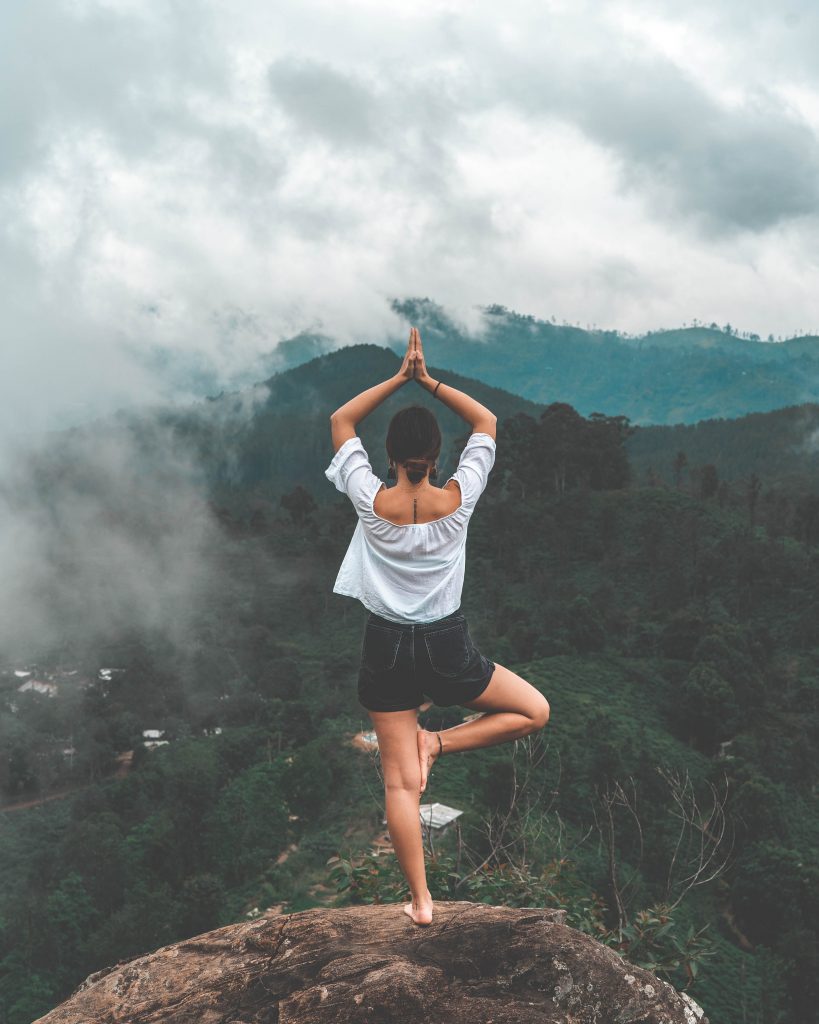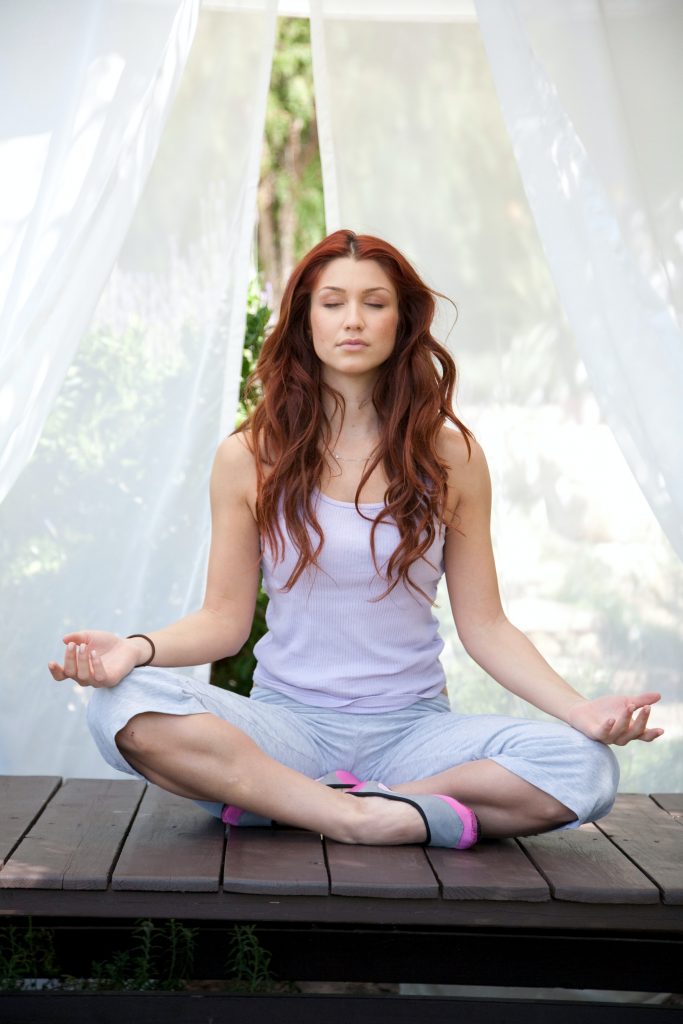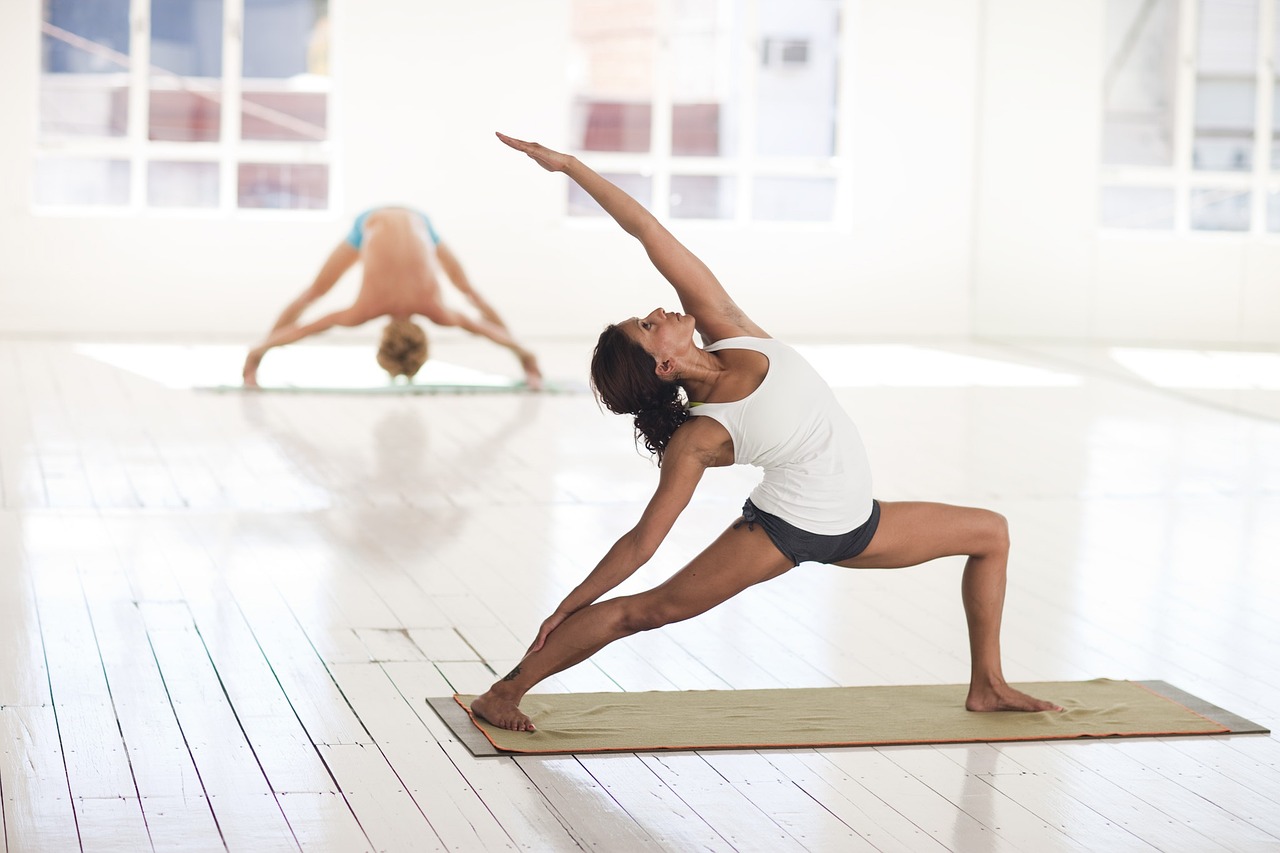If you’re interested in finding ways to improve your overall well-being and align your energy centers, look no further than the practice of yoga and chakra balancing. Yoga, a centuries-old discipline originating from India, combines physical postures, breathing exercises, and meditation techniques to promote physical and mental well-being. Chakra balancing, on the other hand, focuses on the body’s seven energy centers, known as chakras, to promote harmony and balance. By incorporating both yoga and chakra balancing into your daily routine, you can unlock your true potential and cultivate a happier and more balanced life. So, let’s dive into the fascinating world of yoga and chakra balancing and discover the transformative power they hold.

This image is property of images.unsplash.com.
1. What are Chakras?
1.1 The concept of Chakras
Chakras are energy centers within our subtle body that play a vital role in our overall well-being. Derived from the ancient Sanskrit word meaning “wheel” or “disc”, chakras are often described as spinning wheels of energy that correspond to different physical, emotional, and spiritual aspects of our being. These energy centers are believed to be interconnected, influencing and being influenced by one another.
1.2 Seven main Chakras
There are seven main chakras that are widely recognized in the yogic tradition. Each chakra is associated with a specific color, element, mantra, and area of the body. These energy centers are stacked vertically along the spine, from the base to the crown, and each one holds its own unique characteristics and significance.
1.3 Location and functions of each Chakra
Let’s explore the location and functions of each chakra:
-
Root Chakra (Muladhara): Located at the base of the spine, the root chakra is associated with grounding, stability, and our basic survival needs.
-
Sacral Chakra (Svadhisthana): Located in the lower abdomen, just below the navel, the sacral chakra is connected to our creativity, sexuality, and emotional well-being.
-
Solar Plexus Chakra (Manipura): Situated above the navel and below the chest, the solar plexus chakra is associated with personal power, confidence, and self-esteem.
-
Heart Chakra (Anahata): Found in the center of the chest, near the heart, the heart chakra represents love, compassion, and emotional healing.
-
Throat Chakra (Vishuddha): Positioned in the throat area, the throat chakra is linked to communication, self-expression, and speaking one’s truth.
-
Third Eye Chakra (Ajna): Located between the eyebrows, the third eye chakra is associated with intuition, insight, and higher consciousness.
-
Crown Chakra (Sahasrara): Situated at the crown of the head, the crown chakra represents spiritual connection, enlightenment, and transcendence.
2. Understanding Energy Imbalances
2.1 Blocked or unbalanced energy
When the flow of energy in our chakras becomes blocked or unbalanced, it can have a negative impact on our physical, emotional, and spiritual well-being. Blocked energy can manifest as physical ailments, emotional distress, or a general sense of feeling disconnected and out of alignment.
2.2 Causes of energy imbalances
There are various factors that can contribute to energy imbalances in the chakras. Past traumas, stress, negative thought patterns, and unhealthy lifestyle choices can all hinder the smooth flow of energy and disrupt the harmony within our chakras.
2.3 Effects of energy imbalances on overall well-being
When our chakras are imbalanced, we may experience a range of symptoms such as fatigue, irritability, anxiety, and even physical pain. Our relationships, creativity, and overall sense of purpose and fulfillment may also be affected. It is essential to recognize and address these imbalances in order to restore harmony and well-being to our lives.

This image is property of images.unsplash.com.
3. How Yoga helps in Chakra Balancing
3.1 The connection between Yoga and Chakras
Yoga is a holistic practice that aims to bring harmony to the body, mind, and spirit. It offers a wide range of tools and techniques that can help balance and awaken the chakras, promoting overall well-being. Through various yoga practices, we can cultivate awareness, release physical and emotional tensions, and restore the flow of energy within our chakras.
3.2 Yoga poses (Asanas) for Chakra Balancing
Specific yoga poses, also known as asanas, can help activate and balance each chakra. For the root chakra, poses such as Tadasana (Mountain Pose) and Malasana (Garland Pose) can help promote grounding and stability. The sacral chakra can be balanced through poses like Bhujangasana (Cobra Pose) and Supta Baddha Konasana (Reclining Bound Angle Pose). Poses like Navasana (Boat Pose) and Chaturanga Dandasana (Four-Limbed Staff Pose) can activate and balance the solar plexus chakra.
3.3 Importance of breathwork (Pranayama) in Chakra Balancing
Alongside yoga poses, the practice of pranayama, or breathwork, is essential in chakra balancing. Different breathing techniques can activate, cleanse, and balance the chakras. For example, deep diaphragmatic breathing can help ground and stabilize the root chakra, while Kapalabhati (Skull Shining Breath) can invigorate and stimulate the solar plexus chakra. Pranayama practices can be incorporated before, during, or after yoga asana practice to optimize chakra balancing.
4. Root Chakra: Muladhara
4.1 Characteristics and significance of the Root Chakra
The root chakra, also known as Muladhara, is the foundation of the chakra system. It relates to our sense of safety, security, and stability. A balanced root chakra provides us with a solid foundation for personal growth, self-confidence, and a feeling of being grounded.
4.2 Yoga poses and practices for balancing the Root Chakra
To balance the root chakra, incorporating grounding yoga poses into your practice can be beneficial. Some poses that target the root chakra include Tadasana (Mountain Pose), Virabhadrasana I (Warrior I Pose), and Malasana (Garland Pose). These poses help to activate and strengthen the legs, energize the root chakra, and promote a sense of rootedness. Pranayama practices like deep belly breathing and chanting the mantra “Lam” can also help balance the root chakra.

This image is property of images.unsplash.com.
5. Sacral Chakra: Svadhisthana
5.1 Characteristics and significance of the Sacral Chakra
The sacral chakra, Svadhisthana, governs our creativity, sexuality, and emotions. It is associated with pleasure, passion, and the exploration of our desires. A balanced sacral chakra allows for the free flow of creative energy and the expression of our authentic selves.
5.2 Yoga poses and practices for balancing the Sacral Chakra
Yoga poses that target the hips and pelvis can help activate and balance the sacral chakra. Asanas like Bhujangasana (Cobra Pose), Supta Baddha Konasana (Reclining Bound Angle Pose), and Gomukhasana (Cow Face Pose) are beneficial for opening and releasing tension in the hips. Incorporating hip-centric movements and engaging in creative activities can also aid in sacral chakra balancing.
6. Solar Plexus Chakra: Manipura
6.1 Characteristics and significance of the Solar Plexus Chakra
The solar plexus chakra, Manipura, is associated with personal power, confidence, and self-esteem. It governs our sense of identity and autonomy. When the solar plexus chakra is balanced, we feel a sense of inner strength, motivation, and the ability to manifest our desires.
6.2 Yoga poses and practices for balancing the Solar Plexus Chakra
Engaging in yoga poses that activate the core and empower the solar plexus area can help balance Manipura. Poses such as Navasana (Boat Pose), Ustrasana (Camel Pose), and Ardha Navasana (Half Boat Pose) strengthen the abdominal muscles and stimulate the solar plexus chakra. Regular self-reflection and positive affirmations can also contribute to solar plexus chakra balancing.
7. Heart Chakra: Anahata
7.1 Characteristics and significance of the Heart Chakra
The heart chakra, Anahata, is the center of love, compassion, and emotional healing. It governs our ability to give and receive love, kindness, and forgiveness. When the heart chakra is balanced, we experience harmonious relationships, empathy, and a profound connection to ourselves and others.
7.2 Yoga poses and practices for balancing the Heart Chakra
Yoga poses that open the chest and expand the heart space can help activate and balance Anahata. Asanas like Ustrasana (Camel Pose), Bhujangasana (Cobra Pose), and Matsyasana (Fish Pose) are particularly beneficial. Incorporating loving-kindness meditation and heart-opening pranayama practices, such as Anulom Vilom (Alternate Nostril Breathing), can also enhance heart chakra balancing.
8. Throat Chakra: Vishuddha
8.1 Characteristics and significance of the Throat Chakra
The throat chakra, Vishuddha, is associated with communication, self-expression, and speaking our truth. It governs our ability to express ourselves authentically and effectively. A balanced throat chakra allows for clear and honest communication, both with ourselves and others.
8.2 Yoga poses and practices for balancing the Throat Chakra
Yoga poses that target the throat and neck region can help activate and balance Vishuddha. Asanas like Sarvangasana (Shoulder Stand), Setu Bandhasana (Bridge Pose), and Halasana (Plow Pose) stimulate and redirect energy to the throat chakra. Practicing mantra chanting, such as chanting the mantra “Ham,” can also enhance throat chakra balancing.
9. Third Eye Chakra: Ajna
9.1 Characteristics and significance of the Third Eye Chakra
The third eye chakra, Ajna, is associated with intuition, insight, and higher consciousness. It governs our ability to tap into our inner wisdom and perceive the world beyond our physical senses. When the third eye chakra is balanced, we have enhanced clarity, intuition, and a deeper connection to our inner guidance.
9.2 Yoga poses and practices for balancing the Third Eye Chakra
Incorporating yoga poses that encourage focus and inward reflection can help activate and balance Ajna. Asanas like Balasana (Child’s Pose), Paschimottanasana (Seated Forward Bend), and Sirsasana (Headstand) promote a sense of introspection and concentration. Practicing meditation, visualizations, and eye exercises can also help in third eye chakra balancing.
10. Crown Chakra: Sahasrara
10.1 Characteristics and significance of the Crown Chakra
The crown chakra, Sahasrara, is the highest energy center and represents spiritual connection, enlightenment, and transcendence. It governs our connection to the divine and higher states of consciousness. When the crown chakra is balanced, we experience a deep sense of spiritual fulfillment, inner peace, and a profound connection to the universe.
10.2 Yoga poses and practices for balancing the Crown Chakra
While traditional asanas do not specifically target Sahasrara, incorporating meditation, mindfulness, and pranayama practices can help activate and balance the crown chakra. Practicing seated meditation, Shavasana (Corpse Pose), and Viparita Karani (Legs-Up-the-Wall Pose) can promote a state of deep relaxation, clarity, and connection to the divine.
Incorporating yoga practices that specifically target each chakra can help cultivate balance, alignment, and overall well-being. By addressing and nurturing these energy centers, we can unleash our potential and experience a greater sense of happiness, harmony, and fulfillment in our lives. Remember to approach these practices with patience, self-compassion, and a willingness to explore and connect with your inner self. Namaste!


